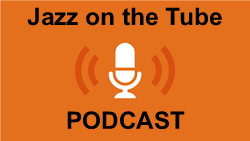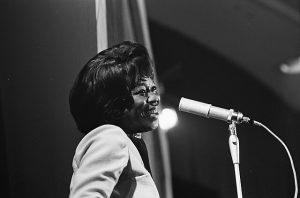Benny Goodman
Jazz On The Tube Radio
Live
Click here to Support Jazz on the Tube
Benny Goodman
Benjamin David Goodman was born on May 30, 1909 in Chicago, Illinois and was the ninth of twelve children. Benny’s parents were poor Jewish immigrants from Europe as his father was a tailor from Warsaw and his mother from Lithuania. Goodman began learning clarinet at ten years old at the local Synagogue before joining the boys club band the following year. While at the boys club Benny received instruction from the musical director and also two years of lessons from classically trained clarinetist Franz Schoepp. Benny cites Johnny Dodds, Leon Roppolo and Jimmy Noone as his early Jazz influences and they were New Orleans musicians who migrated north to Chicago. By the time Goodman was sixteen he was playing professionally with the Ben Pollack Orchestra and recorded with them for the first time in 1926. In 1928 Benny recorded for Victor with a band of all-stars that included the Dorsey brothers and Joe Venuti. In the early 1930s Jazz producer John Hammond arranged some sessions on Columbia Records with Benny, Coleman Hawkins , Jack Teagarden, Joe Sullivan, Gene Krupa, Teddy Wilson and some others.
In the early 1930s Benny purchased Fletcher Henderson’s arrangements and even hired members of Henderson’s band to teach his musicians how to swing. Though Goodman’s band made its name by playing the arrangements of African-American musicians, Benny did do his part to help end segregation by hiring Teddy Wilson in his trio in the early ‘30s and Lionel Hampton in 1936. This was one of the first performing bands to include both white and black musicians and Benny was able to do this because he could afford not to play in the southern states where he would have been arrested for offering people equal opportunity. In 1935 Goodman and his band performed Henderson’s arrangements along with Spud Murphy’s on the weekly radio show ‘Let’s Dance’ and though their time slot was late for people on the East Coast they began forming a huge following on the West Coast. It wasn’t until the band was on tour later that year in California that they even realized they were a hit. Kids were dancing in aisles and the dance known as the ‘Jitterbug’ was born. Benny’s band followed this with a sixth month gig in Chicago and during his time there he played in a special concert series in which he and Krupa sat in with Henderson’s band and this may mark the first time a racially integrated big band performed for a paying audience.
In 1936 Goodman worked in Hollywood for CBS’s show ‘Camel Caravan’. The following year Benny’s publicist suggested he try and play Carnegie Hall which would have been the first time Jazz had been allowed inside those walls. Goodman was very nervous about this idea and felt the audience might not take well to their music but after his film ‘Hollywood Hotel’ received such good reviews he decided to give it a shot. In 1938 Benny Goodman and his band played at Carnegie and slowly won over the audience in a performance which included a jam session with members of Duke Ellington and Count Basie’s bands. Goodman continued playing swing into the 1940s but soon the music would change as it always does and Bebop began to take over. Benny looked to Mary Lou Williams and Mel Powell for help making the adjustment to Bebop and even put together a new band with Buddy Greco, Zoot Sims and Wardell Gray. At first Goodman was very into the music of Dizzy Gillespie, Charlie Parker and Thelonious Monk among others, but after several years of attempts without much success with the new music Benny decided to return to his bread and butter and reform his big band and play Fletcher Henderson arrangements.
In the 1940s and beyond Goodman commissioned works by leading classical composers for clarinet and symphony which include ‘Contrasts’ by Bela Bartok,’ Clarinet Concerto’ by Aaron Copeland and ‘Derivations for Clarinet and Band’ by Morton Gould among other works. In the 1950s Benny recorded several albums of classical music including Mozart’s Clarinet Quintet with the Boston Symphony String Quartet in 1956. In 1957 Goodman was elected into the Down Beat Jazz Hall of Fame. Benny continued performing until the end of his life mostly recreating the bands and music he played in the ‘30s and ‘40s as well as recording and commissioning works within Classical music. In the 1970s Goodman worked with George Benson to recreate his old duets with Charlie Christian. Benny Goodman continued performing till the he passed away in 1987. The following year he was honored with the Grammy Lifetime Achievement Award. Benny leaves a legacy as one of the greatest clarinet players in Jazz and one of the first white band leaders to take an active role in helping to end racial segregation in America. Goodman’s music is still enjoyed today and will be for a long time.
Click here to Support Jazz on the Tube
[tell-a-friend id=”1″ title=”Tell a friend”]





